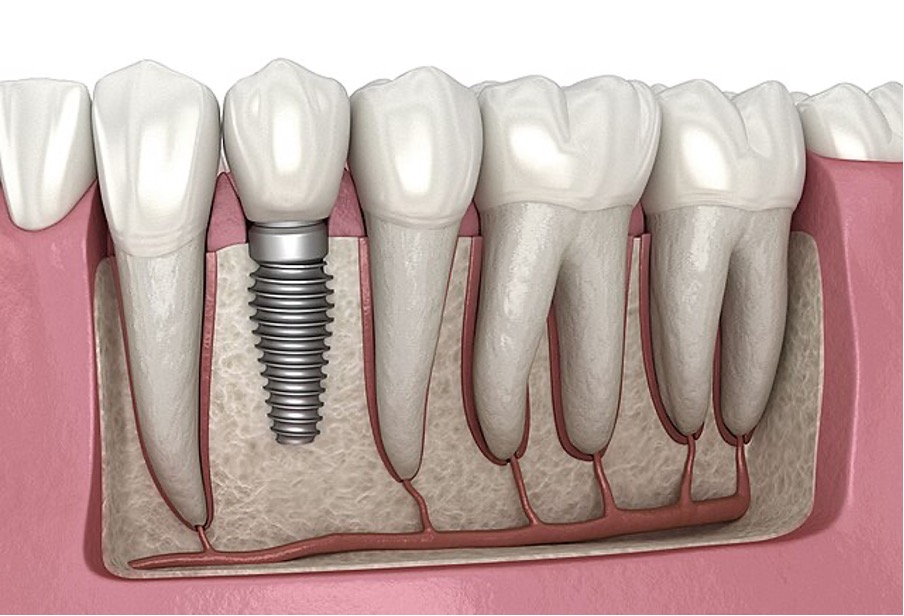Dental Implants
A dental implant is a titanium screw that fits in the jaw bone that provides support to crown that replace missing teeth.

Benefits of having implants
No damage to neighbouring teeth
Traditionally, if there is a missing tooth, the dentist would make a bridge. To fabricate a bridge, the neighbouring tooth on either side of the space needs to be ground down to allow for placement of the bridge.
If the surrounding teeth did not need crowns, then this process removes a major portion of healthy tooth unnecessarily. Bridges set those teeth up for difficulties in the future, such as the need for a root canal, development of tooth decay.
Can look and function like natural teeth
Individual implants mimic a natural tooth better than any other option in dentistry. And unlike bridges or dentures, the strength of implant biting is often strong.
Designed to be a long-term fix
Implants are predictable restorations. Because they are attached to a human body nothing can be guaranteed, but we anticipate implants that are well maintained will last for a long time.
Prevent bone loss and tooth movement
Without stimulation, our bone atrophies and shrinks away. When a tooth is removed, the bone that is used to support that tooth will shrink over time, creating defects or dents, changes in face shape, and collapse of the cheeks and lips to make the patient appear older than they are.
When implants are placed, the forces from chewing are transmitted through the restoration into the bone. These forces stimulate the bone so that it maintains density and volume to support the implant, just as the bone surrounding natural teeth does. Also, our teeth prefer to have partners: if a tooth is removed, the opposing tooth will often grow out of the bone because there is no contact. Teeth will also tip or move forward into areas where teeth are missing which can alter and disrupt proper biting.
Prevent bone loss and tooth movement
The most common image of a dental implant is one supporting a single crown, but they can be used in a variety of indications. Implants placed in multiples are able to support bridges to maximize the number of teeth replaced with a smaller number of implants.
When a patient has lost bone, four or more implants can be placed to support up to a full arch prosthesis that replaces teeth and the bone that is used to support them.
Partial and complete denture patients benefit greatly from implants, as snaps can be placed on top of the implants instead of crowns and bridges. These snaps help the denture fasten in place and provide a major improvement in stability, comfort, chewing forces, and phonetics.
Can be changed or updated
The top portion of the implant can be changed or updated throughout the patient’s life. If an implant was first placed to replace a single missing tooth, it can be swapped out to help support a bridge if nearby teeth are later extracted. If many or all of a patient’s teeth end up being removed, the crown or bridge can be changed to help support a partial or complete denture. This ability to modify an implant helps the patient to continue to benefit from the implant as they age and indications change.
